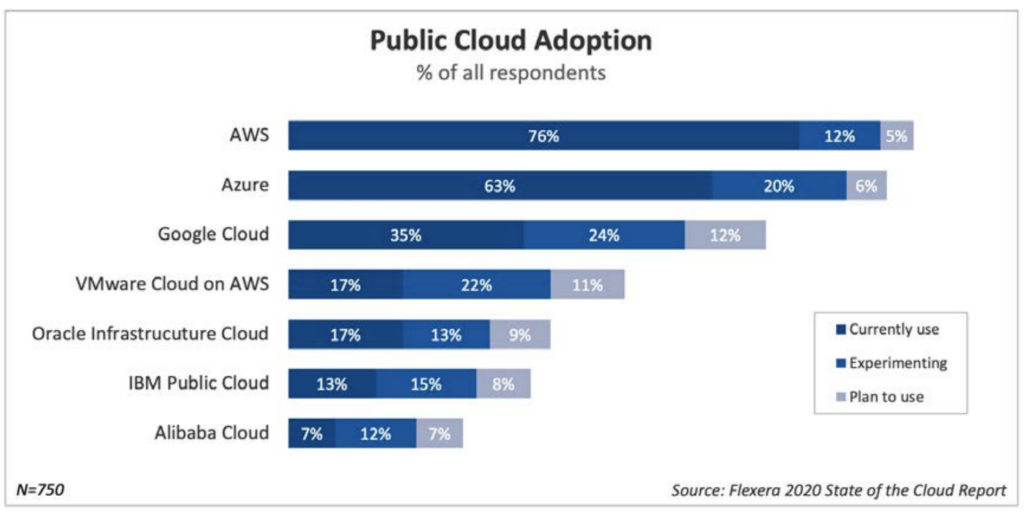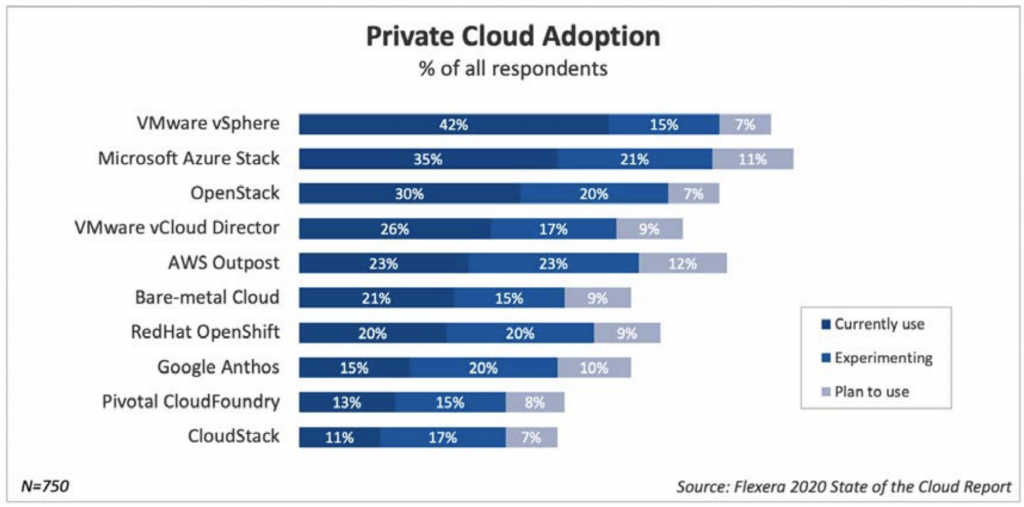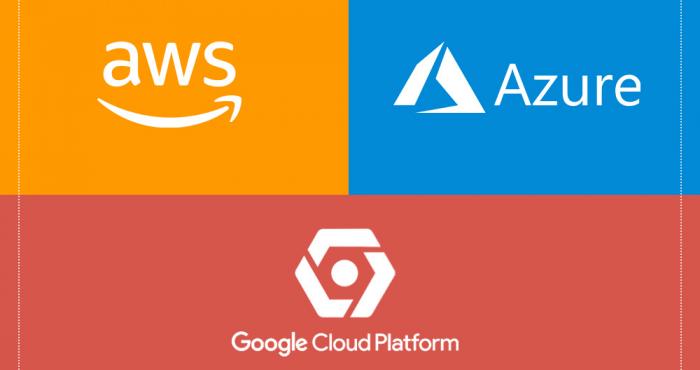The Basics
Cloud providers have taken the tech world by storm over the past several years. Amazon led the way with cloud computing in 2006 when it launched the Amazon Elastic Compute Cloud (EC2) service. The cloud, however, was mentioned as early as 1998.
The Flexera state of the cloud report provides a snapshot of the current state of cloud computing. The Flexera report is compiled once a year and contains insights about how companies are using cloud providers, along with adoption rates.
Primary Use Cases
Companies use cloud providers for numerous reasons. There are many use cases due to the flexibility and interoperability cloud services provide.
Here are some of the primary use cases.
- Hosting servers on virtual machines and containers
- Solving large scale computing problems like big data analysis, machine learning, and artificial intelligence.
Adoption Rates
Cloud providers have enjoyed massive growth due to rapid adoption amongst companies going through digital transformations. Cloud adoption is mixed between public and private clouds.
Public Cloud Adoption
Amazon Web Services leads the pack while Microsoft Azure is not far behind. Google has a fair share but lags due to a late start and a reduced number of relationships with large enterprises.

Private Cloud Adoption
Private clouds are an alternative to public clouds. These services allow people to reduce the complexity of hosting varied resources into a single-entry point of APIs, much like AWS, Azure, and other public cloud providers.

Amazon Web Services

In 2002 the AWS platform was born. This move was a classic case of dogfooding where Amazon needed web-scale to deliver their shopping experience at scale. Why wouldn’t Amazon attempt to recoup some of their hosting costs by reselling their platform?
The AWS platform applies the single-responsibility principle to its services in most cases. Alternatively, services like LightSail aggregate services into a single service.
Microsoft Azure

Microsoft Azure is like AWS in many ways. It provides scalable services that complement their business productivity solutions. Azure’s cloud services tend to appear like a monolith within the Azure Web Portal. Under the hood, there are single responsibility services like Azure Functions that allow you to run functions in the cloud, much like AWS with AWS Lambda.
Google Cloud

Google’s services have evolved in fits over the years. Google App Engine was released in 2008 and was meant solely for Python applications with its first iteration. Fast forward to the present, and Google App Engine now supports a multitude of languages. Google’s cloud services bear a resemblance to other cloud services, as evidenced by the Google Cloud Functions service.
The Rest
I could go on and on like Larry Ellison, but I’ll spare you that. Luckily, the software industry is a shining bastion of commerce. There is plenty of room for the likes of Oracle, VMWare, Red hat, and others. The industry is booming, and competition is fierce just the way I like it.
Conclusion
Cloud providers are a continually evolving beast. Trends come and go, and the war rages on between cloud-native vs. containers. Developers are the clear winner of the cloud computing wars. If we can keep choice overload at bay, we will continue to benefit from the power these platforms provide.
Cloud Providers - Beyond the Basics
- Books
- Videos
- Fundamentals of Cloud Computing - Pluralsight
- Cloud Computing: The Big Picture - Pluralsight
- Learning Cloud Computing: Core Concepts - LinkedIn
- Cloud Computing Concepts - Udemy
